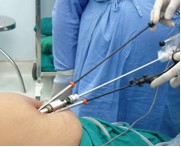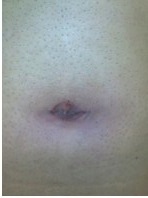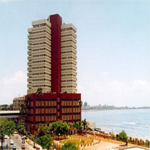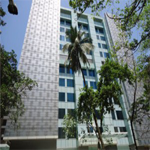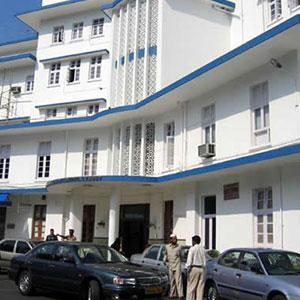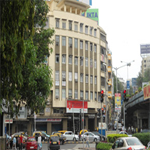Laparoscopic appendectomy is performed through three cuts – a 1cm cut at the navel and two 5mm cuts in the lower abdomen. The surgeon passes tubes called “ports” through these small cuts. A telescope is introduced through one of them and two instruments through the other ports. The appendix is freed up, its junction with the cecum is ligated and it is removed via the port. As the cuts made for laparoscopic appendectomy are small, the chances of infection in them are reduced. Also, even if the appendix is hidden behind intestines, the surgeon is more often than not able to complete the operation using only three ports. This is true whatever the built of the patient – slim or obese. Also, the surgeon is able to survey all the other organs in the region, if required, in the eventuality that the appendix looks normal and is considered not to be the cause of the pain.
In a single incision laparoscopic appendectomy (SILA), the surgeon makes only one incision inside the navel and places all three cannulas or tubes through this. The rest of the operation is completed in the same way as the laparoscopic appendectomy described above and the appendix brought out through the small incision at the navel.
In 5% to 10% patients it may not be possible to complete the operation by SILA due to technical difficulties. The surgeon places one or two additional ports and completes the procedure in the traditional laparoscopic manner. Very rarely, it may be necessary to convert to an open operation. Both these issues are always discussed with patients prior to surgery and they are made aware that conversion to traditional laparoscopy or indeed to open surgery merely represents a sound judgment on part of the surgeon in the interest of patient safety.
Using innovative techniques and indigenous instruments Dr Bhandarkar now offers his patients SILA at exactly the same cost as traditional laparoscopic appendectomy. So the patients can enjoy the benefits of this revolutionary surgery at no extra expense.
Less pain from the single, short incision after surgery
Shorter hospital stay
Shorter recovery time
Faster return to normal diet
Faster return to work or normal activity
Better cosmetic healing (an almost invisible scar)






